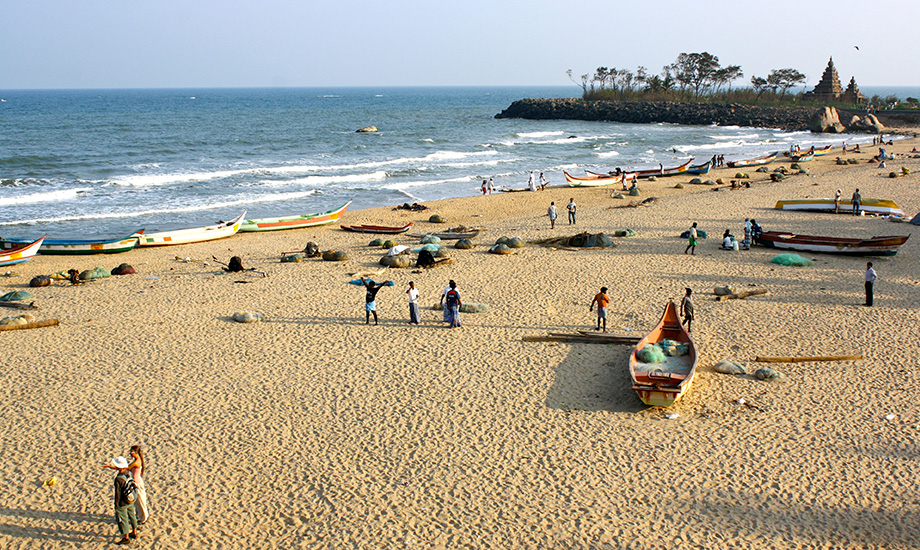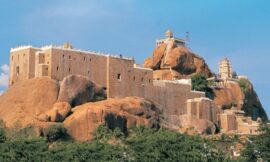Mahabalipuram, also known as Mamallapuram, is a historic town along the Coromandel Coast of Tamil Nadu, India. Renowned for its ancient rock-cut temples, stunning sculptures, and UNESCO World Heritage sites, Mahabalipuram is a captivating destination that transports visitors back in time while offering a serene coastal setting.
The town’s history dates back to the Pallava dynasty, particularly during the reign of Narasimhavarman I (also known as Mamalla), who ruled in the 7th century. Mahabalipuram served as a bustling seaport and a thriving center for trade and commerce during this period. The architectural and artistic marvels crafted during the Pallava dynasty have made Mahabalipuram a significant archaeological and cultural treasure.
The most iconic landmark in Mahabalipuram is the Shore Temple, an exquisite example of Dravidian temple architecture. Built on the shores of the Bay of Bengal, the temple is dedicated to Lord Shiva and is famous for its unique location, with the waves of the sea lapping at its foundations. The Shore Temple is adorned with intricate carvings, depicting scenes from Hindu mythology and showcasing the mastery of Pallava sculptors.
The group of sanctuaries in Mahabalipuram, also recognized as the ‘Seven Pagodas’ by European travelers, includes various rock-cut temples and monolithic structures. The Pancha Rathas, or Five Rathas, are monolithic rock-cut shrines carved in the form of chariots, each representing a different architectural style. The structures are named after the Pandava brothers and Draupadi from the Mahabharata.
Arjuna’s Penance, a massive relief carved on two large rocks, is another awe-inspiring creation in Mahabalipuram. This bas-relief, also known as the Descent of the Ganges, depicts a narrative from Hindu mythology, showcasing scenes of divine and earthly beings. The level of detail and artistic finesse in Arjuna’s Penance makes it a visual marvel that continues to attract art enthusiasts and historians.
The Tiger Cave, a short distance from the main complex, is a rock-cut cave temple with intricate carvings. The name is derived from the carvings of tiger heads on the entrance, and the cave is believed to have served as a place of meditation or worship during ancient times.
The Krishna’s Butter Ball, a massive natural rock boulder perched on a slope, is a curious geological formation and a popular tourist attraction. Legend has it that Lord Krishna used to steal butter, and the boulder resembles a dollop of butter about to fall.
Mahabalipuram’s lighthouse stands as a modern counterpart to its ancient wonders. Providing panoramic views of the coastal town and the Bay of Bengal, the lighthouse allows visitors to appreciate the beauty of Mahabalipuram from a different perspective.
The town’s vibrant cultural scene is celebrated through its dance festivals, attracting performers and enthusiasts from around the world. The Mamallapuram Dance Festival, held against the backdrop of the Shore Temple, showcases classical Indian dance forms such as Bharatanatyam, Kuchipudi, and Kathak, bringing the ancient art forms to life in a modern context.
Mahabalipuram’s proximity to the sea also makes it a popular beach destination. The golden sands of the Mahabalipuram Beach offer a serene escape, and the sea-facing cafes provide a perfect setting to enjoy the coastal ambiance.
In conclusion, Mahabalipuram is a treasure trove of ancient art and architecture, offering a captivating journey through the cultural heritage of Tamil Nadu. Whether exploring the rock-cut temples, marveling at the intricate carvings, or simply basking in the coastal serenity, visitors to Mahabalipuram are treated to an immersive experience that transcends time and leaves a lasting impression of India’s rich historical tapestry.



